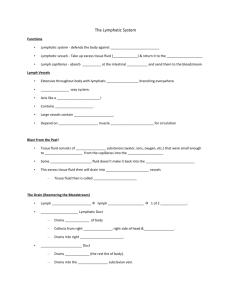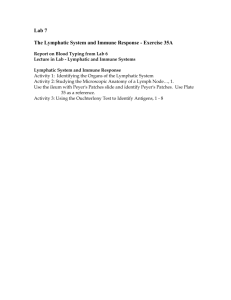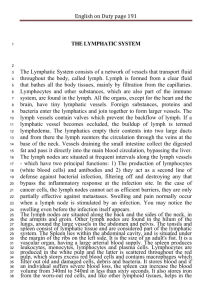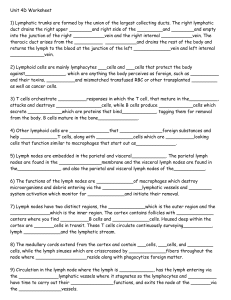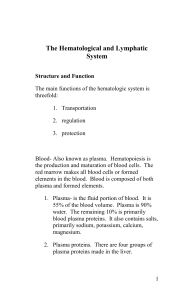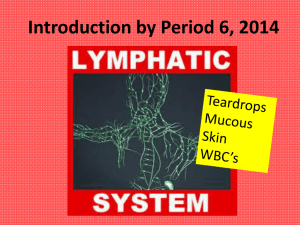Lecture 14
advertisement
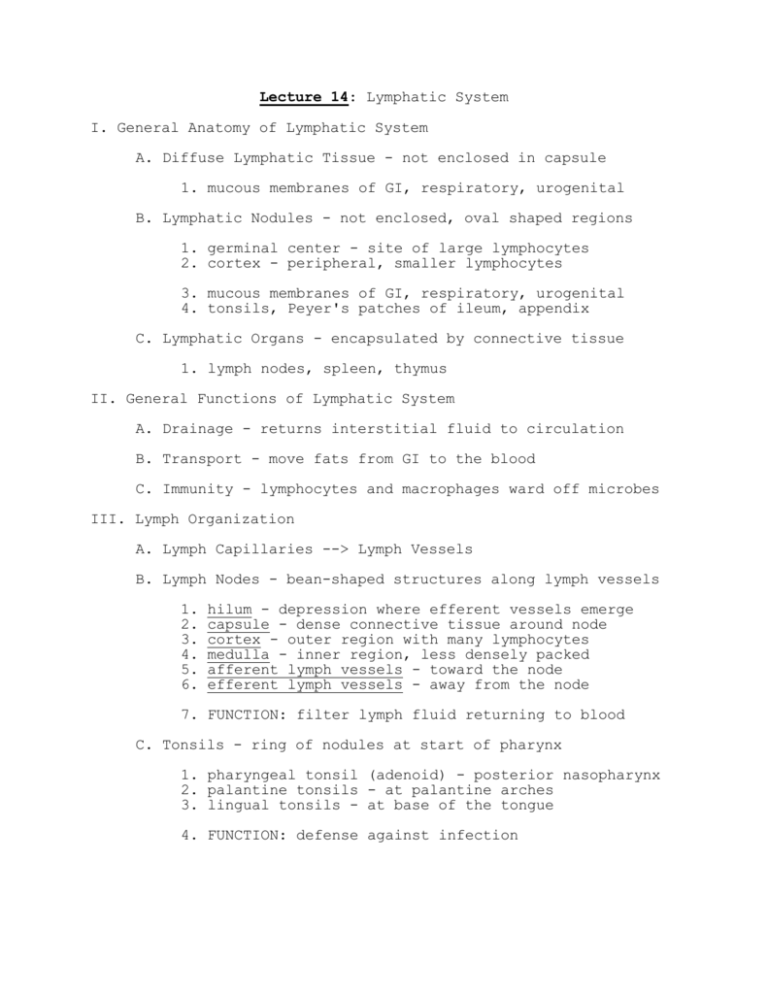
Lecture 14: Lymphatic System I. General Anatomy of Lymphatic System A. Diffuse Lymphatic Tissue - not enclosed in capsule 1. mucous membranes of GI, respiratory, urogenital B. Lymphatic Nodules - not enclosed, oval shaped regions 1. germinal center - site of large lymphocytes 2. cortex - peripheral, smaller lymphocytes 3. mucous membranes of GI, respiratory, urogenital 4. tonsils, Peyer's patches of ileum, appendix C. Lymphatic Organs - encapsulated by connective tissue 1. lymph nodes, spleen, thymus II. General Functions of Lymphatic System A. Drainage - returns interstitial fluid to circulation B. Transport - move fats from GI to the blood C. Immunity - lymphocytes and macrophages ward off microbes III. Lymph Organization A. Lymph Capillaries --> Lymph Vessels B. Lymph Nodes - bean-shaped structures along lymph vessels 1. 2. 3. 4. 5. 6. hilum - depression where efferent vessels emerge capsule - dense connective tissue around node cortex - outer region with many lymphocytes medulla - inner region, less densely packed afferent lymph vessels - toward the node efferent lymph vessels - away from the node 7. FUNCTION: filter lymph fluid returning to blood C. Tonsils - ring of nodules at start of pharynx 1. pharyngeal tonsil (adenoid) - posterior nasopharynx 2. palantine tonsils - at palantine arches 3. lingual tonsils - at base of the tongue 4. FUNCTION: defense against infection D. Spleen - lymph tissue between stomach and diaphragm 1. visceral surface - to stomach, left kidney, colon 2. diaphragmatic surface 3. white pulp - dense lymphocytes around arteries a. splenic nodules - dense lymph nodules 4. red pulp - venous sinuses filled with blood 5. FUNCTION: phagocytizes bacteria and old blood cells E. Thymus Gland - posterior to sternum and between lungs 1. thymic lobes - two halves of thymus 2. epithilioreticular tissue - produces T cells 3. FUNCTION: release hormones and T cells for immunity





